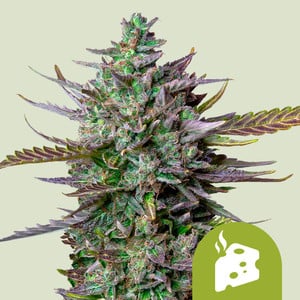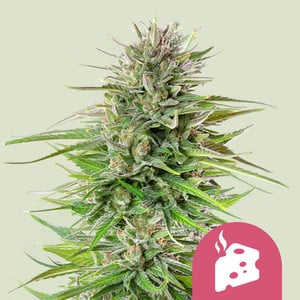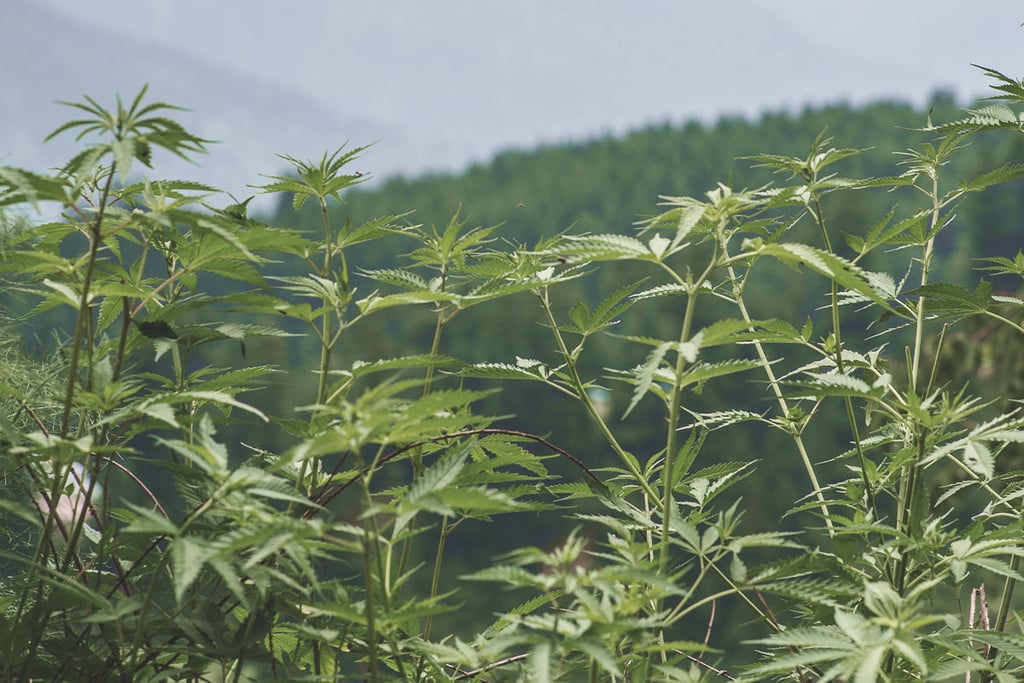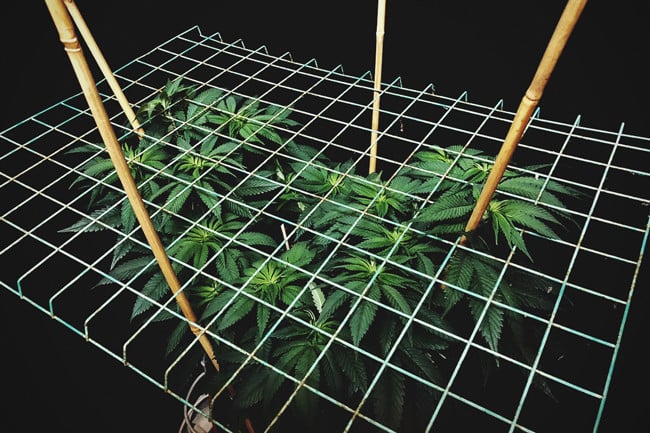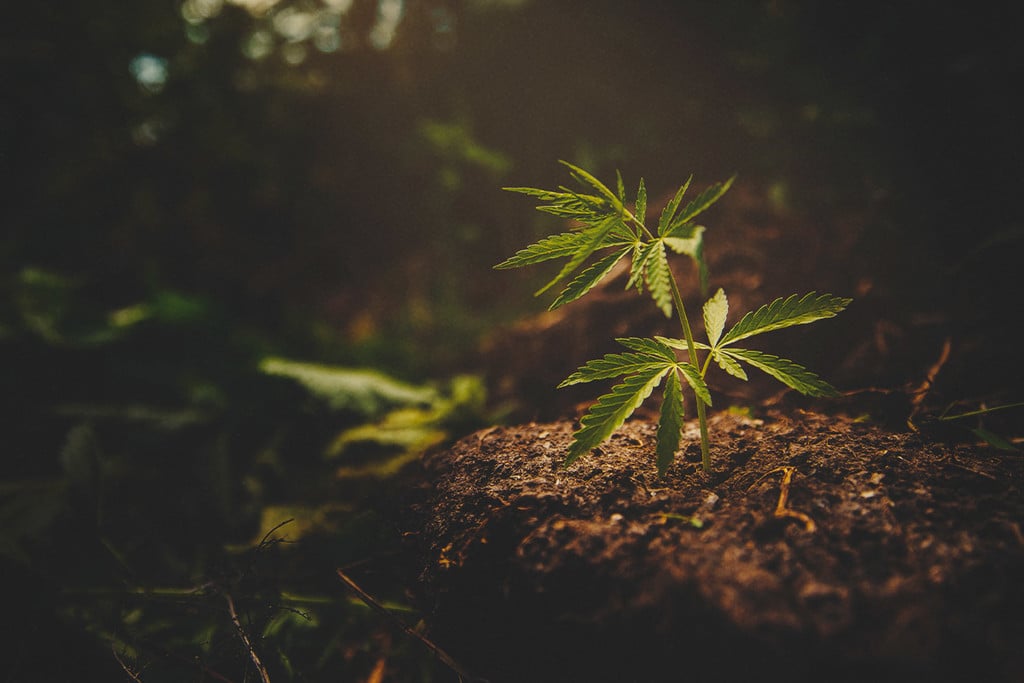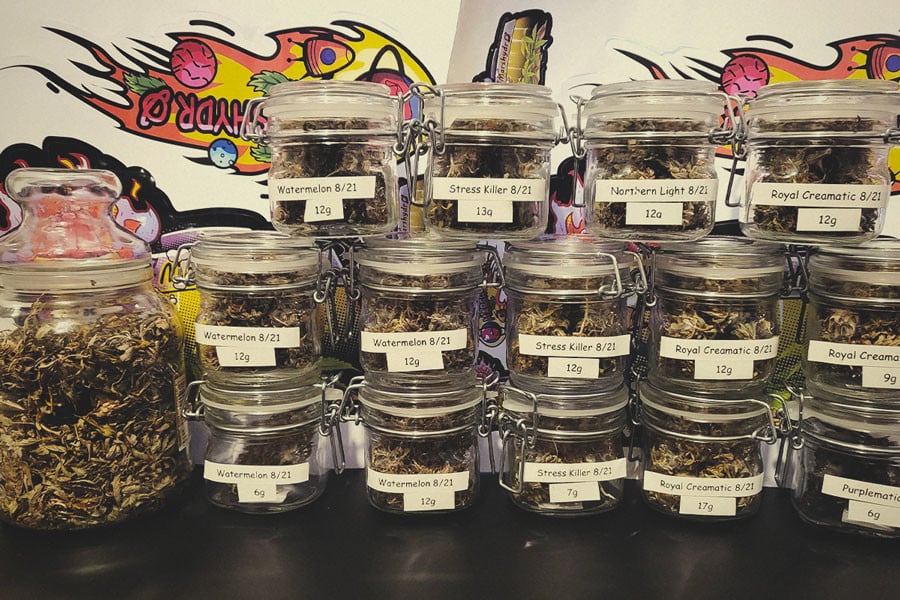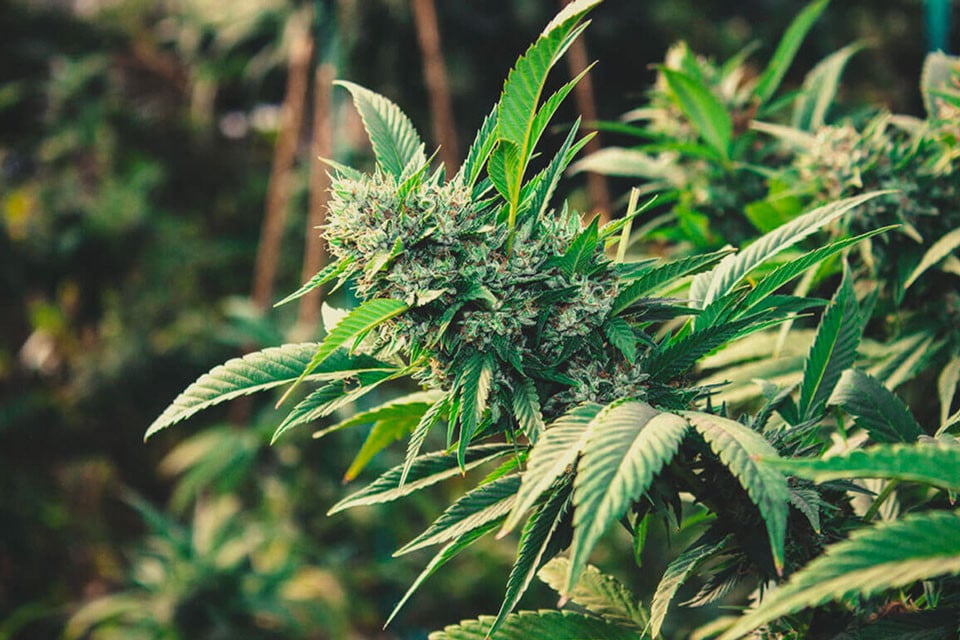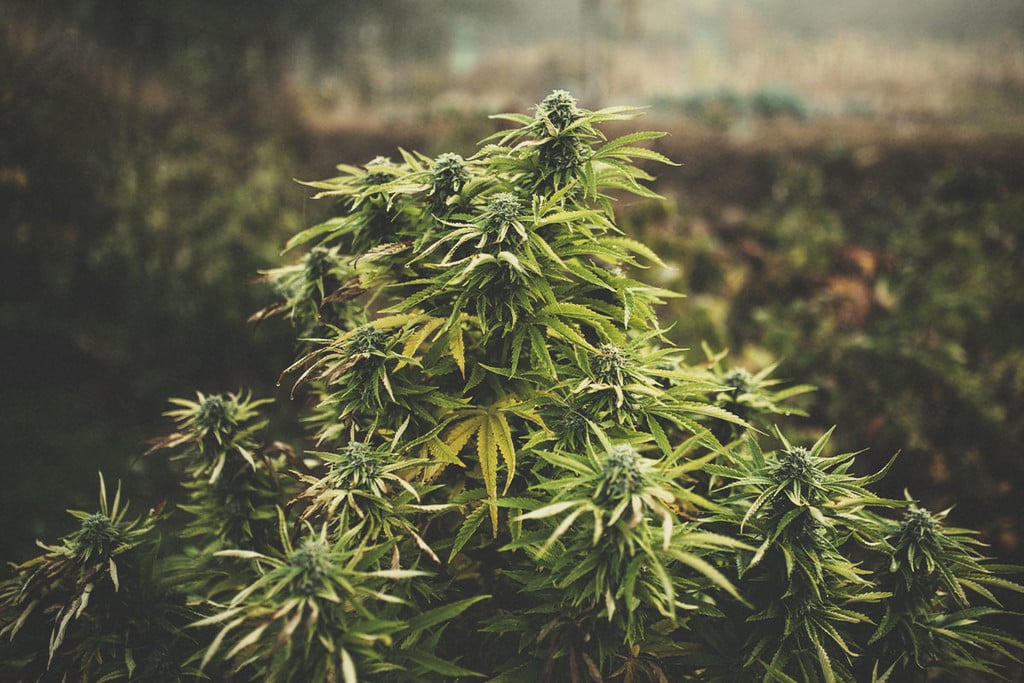.
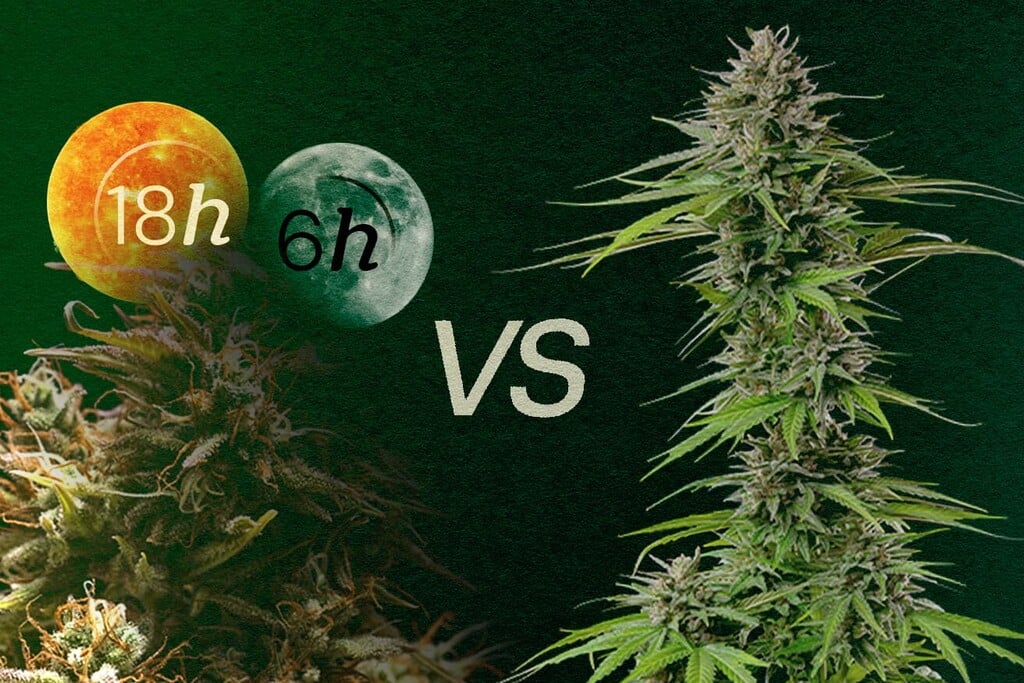
Photoperiod vs Autoflower: Pros, Cons & What to Consider
Not sure about the difference between autoflower and photoperiod cannabis? This guide breaks down the pros and cons of each, so you can decide which suits your grow setup best.
Contents:
- Autoflower vs photoperiod for beginners
- Photoperiod vs autoflowering cannabis: timeline comparison
- Autoflower vs photoperiod: how to tell the difference
- Photoperiod vs autoflower yield
- Autoflower vs photoperiod potency and bud quality
- Autoflower vs photoperiod pros and cons
- Auto vs photoperiod: who reigns supreme?
When growing cannabis plants, you have multiple options to consider when it comes to genetics. For most home growers, the choice comes down to feminized photoperiod strains and feminized autoflowering strains. But how do these varieties compare?
This article will explain the pros and cons of both strain types, highlighting specifics such as potency, yield, life cycle duration, and generally what to expect the next time you decide to grow autoflowering or photoperiod weed plants.
Autoflower vs Photoperiod for Beginners
Before comparing these characteristics, let’s look at what sets these plants apart.
“Photoperiod” simply means a plant is phototropic, responding to specific light cycles in order to transition from the vegetative to flowering period.
This means that during the seedling and vegetative stages, photoperiod plants typically require 18 hours of light and 6 hours of dark. Once a photoperiod cannabis plant is big and mature enough, flowering can be induced indoors by providing 12 hours of light and 12 hours of dark. Outdoors, the decline in light hours happens naturally as summer turns into autumn, thus triggering flowering in plants without the grower having to take any action.
Autoflowering weed plants, on the other hand, are not reliant on a shift in light hours and will flower automatically (generally after around 3–4 weeks of veg), regardless of how much light they receive. The reason for this is that autos contain ruderalis genetics—a subtype of cannabis that endows plants with the autoflowering trait.

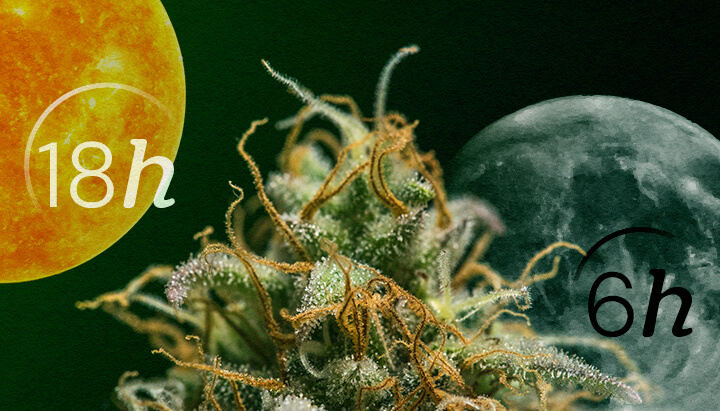
Photoperiod vs Autoflowering Cannabis: Timeline Comparison
One of the most significant incentives of growing autoflowers, especially for indoor growers, is their quick turnaround and predetermined life cycle. Not only will you not need to change the light cycle to induce bloom, but you can more or less expect your plants to finish by the date specified on the seed packaging or the seed company’s website.
With photoperiod plants, indoor growers can keep them in the vegetative stage for essentially as long as they want, allowing for larger plants but also a longer time frame.
With that in mind, below is a week-by-week timeline of our Blue Cheese Auto strain and photoperiod Blue Cheese, respectively.
Week-by-Week Timeline of an Autoflower Grown Outdoors in May
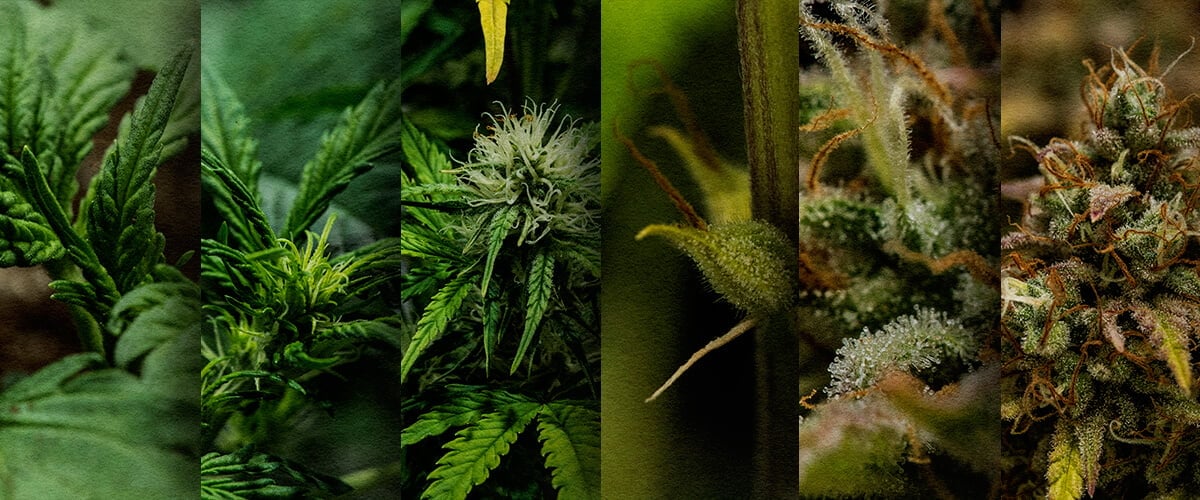
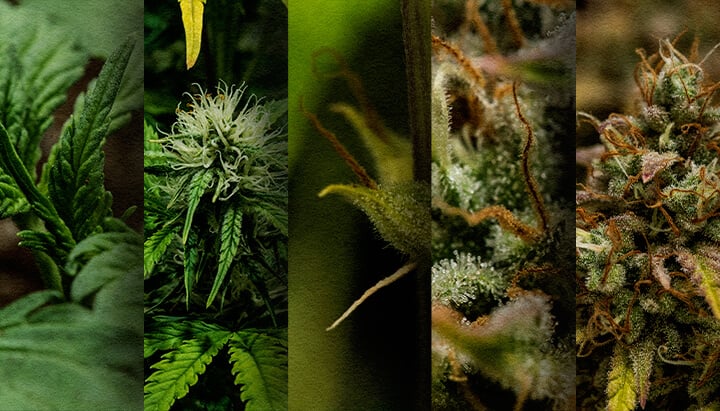
Blue Cheese Auto has a genetic lineage of 40% indica, 35% sativa, 25% ruderalis, and a seed-to-harvest time of 11 weeks.
Week 1: Seedling stage (May)
Week 2: Seedling stage (May)
Week 3: Vegetative stage (May)
Week 4: Vegetative stage (May)
Week 5: Flowering stage (June)
Week 6: Flowering stage (June)
Week 7: Flowering stage (June)
Week 8: Flowering stage (June)
Week 9: Flowering stage (July)
Week 10: Flushing and final flowering (July)
Week 11: Flushing / Harvest stage (July)
Blue Cheese Auto
|
|
Blueberry x Cheese x Ruderalis |
|
|
325 - 375 gr/m2 |
|
|
40 - 70 cm |
|
|
6 - 7 weeks |
|
|
THC: 16% |
|
|
Sativa 35% Indica 40% Ruderalis 25% |
|
|
60 - 110 gr/plant |
|
|
60 - 110 cm |
|
|
10 – 11 weeks after sprouting |
|
|
Clear, Uplifting |
Week-by-Week Timeline of a Photoperiod Grown Outdoors in May
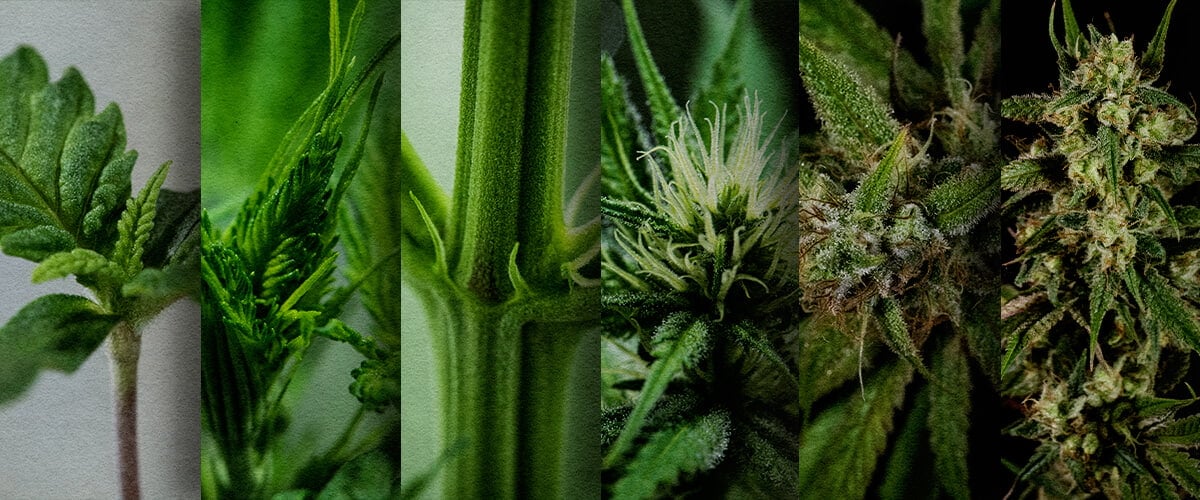

Once you germinate seeds, you will have much more freedom regarding how long you want your photoperiod plants to grow. Below is a timeline based on the photoperiod version of Blue Cheese feminized, which has a flowering time of 9 weeks.
Week 1: Seedling stage (May)
Week 2: Seedling stage (May)
Week 3: Vegetative stage (May)
Week 4: Vegetative stage (May)
Week 5: Vegetative stage (June)
Week 6: Vegetative stage (June)
Week 7: Vegetative stage (June)
Week 8: Vegetative stage (June)
Week 9: Vegetative stage (July)
Week 10: Vegetative stage (July)
Week 11: Vegetative stage (July)
Week 12: Flowering stage (July)
Week 13: Flowering stage (Aug)
Week 14: Flowering stage (Aug)
Week 15: Flowering stage (Aug)
Week 16: Flowering stage (Aug)
Week 17: Flowering stage (Sep)
Week 18: Flowering stage (Sep)
Week 19: Flushing and final flowering (Sep)
Week 20: Flushing / Harvest stage (Sep)
Blue Cheese
|
|
Original Cheese x Oregon Blueberry Blend |
|
|
500 - 550 gr/m2 |
|
|
100 - 160 cm |
|
|
8 - 9 weeks |
|
|
THC: 19% |
|
|
Sativa 40% Indica 60% |
|
|
500 - 550 gr/plant |
|
|
140 - 200 cm |
|
|
Late September |
|
|
Clear, Physically Relaxing, Stoned |
Autoflower vs Photoperiod: How to Tell the Difference
You can’t necessarily distinguish between an autoflowering plant and a photoperiod one by looks alone—especially since autoflowers are now more similar in size and shape to photoperiods than they once were. With that said, there are some general guidelines to consider.
Photoperiod plants typically reach final heights of around 150–200 cm, depending on the strain. Some strains can grow even taller, but this is rarer. Autos generally keep a short and squat profile with a final height of 75–120 cm.
You might also be able to recognise an autoflower according to the number of nodes. Generally, autos start to bloom after developing around 4–5 nodes, while growers of photoperiod strains often wait until a plant has at least 6–8 nodes before considering making the switch.
It’s important to note that autoflowering cannabis plants do not react well to repotting and are best planted in their final container of 20–30 litres. Repotting autos can stress them, slow their growth, or even cause stunting. Photoperiod strains, however, can be repotted multiple times if desired, as long as they are given a week or more to recover during the vegetative stage.
The flowering timeline for autos and photoperiods can also vary. Usually, the former is faster to finish, taking on average 6–8 weeks to bloom. Photoperiods can take anywhere from around 7–12 weeks or more. In total, photoperiods require 20+ weeks before they are ready to harvest, while autos may take as little as 10 weeks from germination.
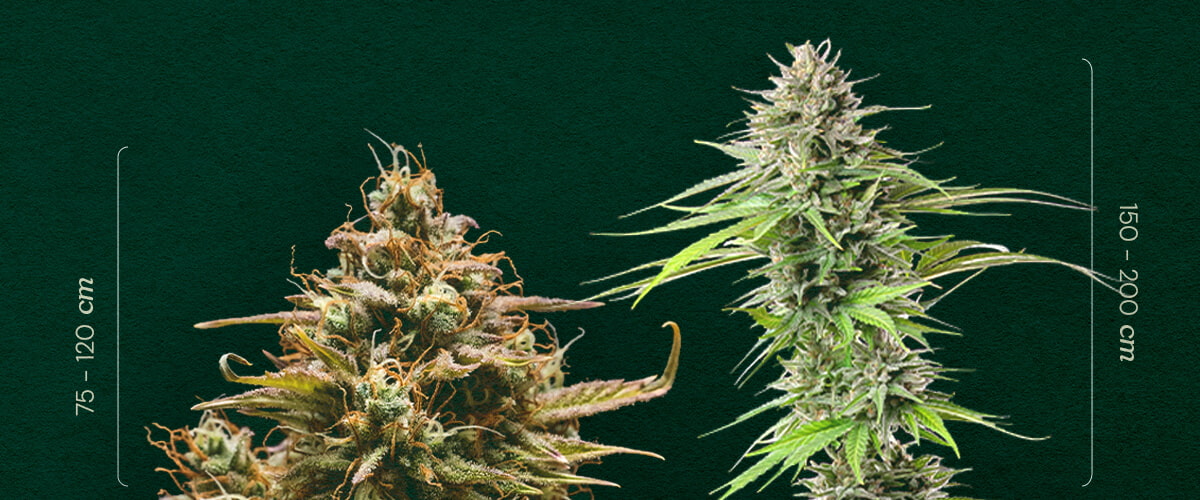
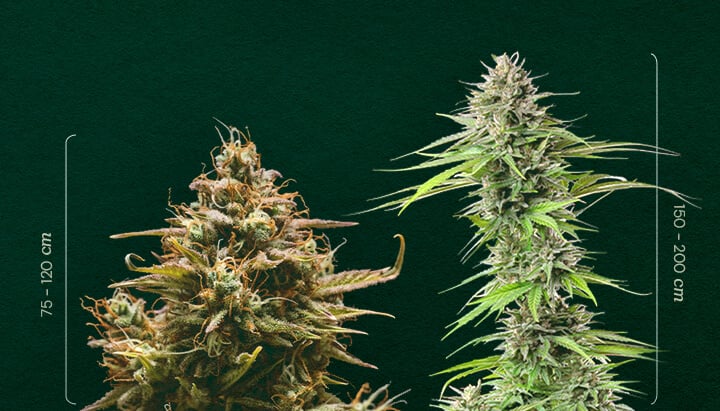
Photoperiod vs Autoflower Yield
Though autos tend to grow shorter than photoperiod cannabis plants, under the right circumstances, they are capable of producing excellent yields. When using the sea of green (SOG) method and growing plants closely together, autos have a fast turnaround time and can yield an impressive amount with little maintenance or nutrients required. If yield is the main goal, growing a high volume of autos is best. Using our Blue Cheese Auto as an example, this strain produces average harvests of 400 g/m² indoors and 150 g/plant outdoors.
Photoperiod plants, however, are typically able to produce larger yields given their larger size and bushier morphology; they can also be trained to maintain a perfect structure for max yields using techniques like topping and ScrOG. Growers of our photoperiod Blue Cheese strain can look forward to up to 500 g/m² indoors and 500 g/plant outdoors.
Autoflower vs Photoperiod Potency and Bud Quality
You may be asking yourself, “How potent is an autoflowering cannabis plant vs a photoperiod cannabis plant?”. You might be surprised to learn that with the advancements of modern-day breeding, autos can be just as potent as photoperiods, or at least very close. There should also be no significant differences in the quality of the resin, terpene production, or buds of either.
If you did a blindfolded smoking test, you would struggle to know which buds came from which plant. This is one of the main reasons autoflowering weed plants have soared in popularity recently, as the potency and quality of the flowers has come a long way. Using our two former strains as examples, their potency is very similar, with Blue Cheese Auto clocking in at 16% THC and the photoperiod Blue Cheese at 19% THC.
Autoflower vs Photoperiod Pros and Cons
Without further ado, here are the pros and cons of growing autoflowering vs photoperiod strains. And remember, whichever you choose, the results should be high-quality in both cases.

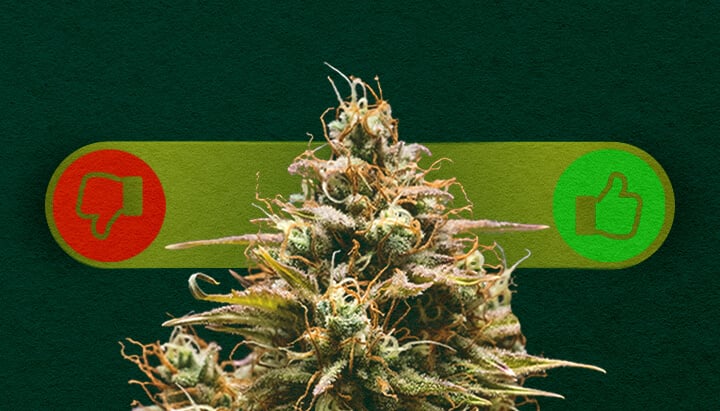
Pros of Growing Autoflowering Cannabis Plants
- Autoflowering weed plants are discreet and low-profile, reaching 75–120 cm on average.
- They have a fast turnaround time of as little as 10 weeks.
- They are well-suited for a garden, terrace, balcony, or miniature indoor grow spaces.
- They are low-maintenance plants ideal for first-time growers.
- They do not require light cycle changes to flower.
- They do not require a lot of nutrients.
- Growing autos can produce perpetual harvests both indoors and outdoors.
- Outdoors in a hot climate, autos can be grown for up to 9 months of the year.
- They are efficient and excellent producers when grown in a SOG setup.
- They are solid performers in both indoor and outdoor cultivation.
- They are resilient to cold weather and other adverse conditions.
Cons of Growing Autoflowering Cannabis Plants
- Only low-stress forms of training can be used, and recovery time is minimal.
- Autos tend to produce smaller yields per plant than photoperiod specimens.
- They aren’t suitable for cloning or keeping mother plants.
- They respond poorly to being repotted, and doing so can slow down growth, or worse.

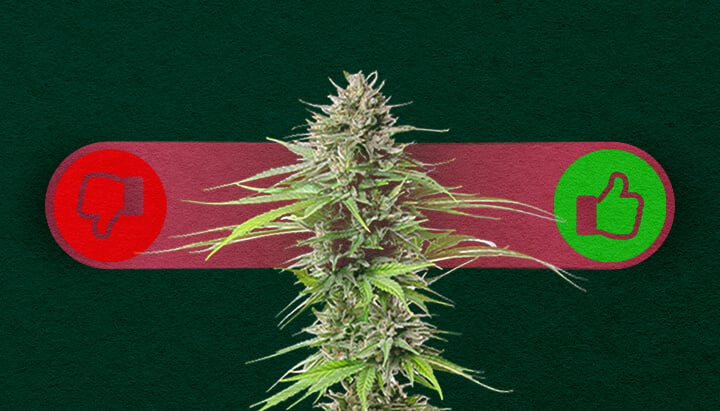
Pros of Growing Photoperiod Cannabis Plants
- Photoperiod cannabis plants can stay in the vegetative stage for an extended time, leading to bigger, higher-yielding plants.
- These plants can be cloned or used as mother plants.
- Growers can use both low and high-stress training to optimise plant shape and maximise yields.
- It’s possible to achieve much larger yields per plant when growing photoperiod specimens.
- Repotting is generally encouraged, as long as plants are given ample time to recover.
Cons of Growing Photoperiod Cannabis Plants
- Beginners may struggle with inducing and maintaining flowering indoors.
- Certain sativa strains can grow as tall as 300 cm, making them impractical indoors.
- Outdoors, the time frame to harvest can be twice as long as autos.
Auto vs Photoperiod: Who Reigns Supreme?
In the battle of auto vs photoperiod, the winner depends on the preferences, grow space, and experience level of the grower. While growing photoperiod strains is a classic practice—one that often comes with big yields of potent flowers—autoflowers offer a faster and potentially easier path to comparable yields and potency. Both types can yield high-quality results—autos bring speed and simplicity, while photoperiods offer flexibility and bigger rewards. So, which will you choose?


























